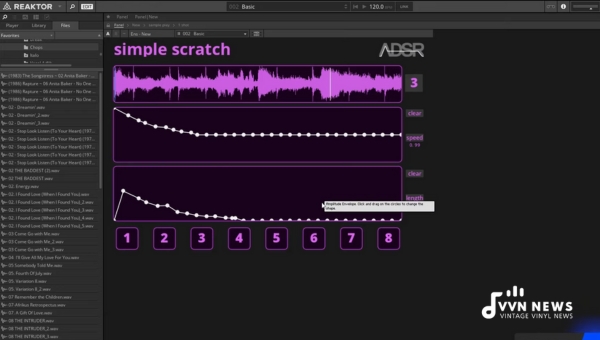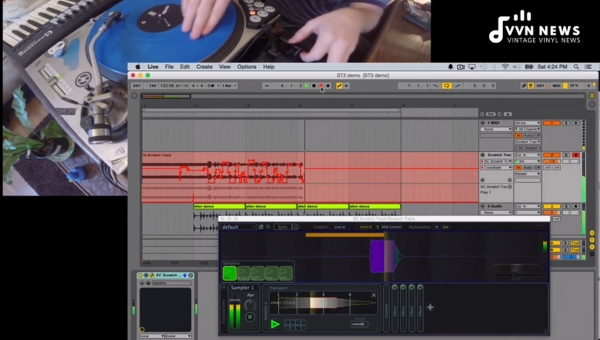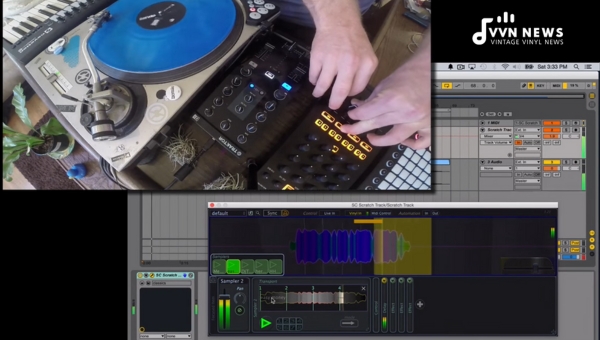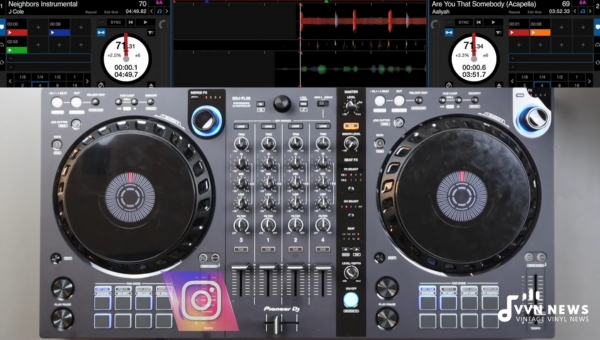As music production technology has advanced, many incredible tools have been developed that serve to enhance the quality of our compositions and streamline the creative process.
One such ingenious concept is a scratch track. Before we delve deep into the benefits of using a scratch track, it would be fitting to explain what it is exactly briefly.
A scratch track, in simple terms, is a basic guide track recorded during an initial run-through of a song or composition.
It can aid significantly in structuring your future work and maintaining proper alignment as you proceed further with your project.
Now that you’ve got the basic idea, let’s explore why availing myself of this seemingly simple practice has been nothing short of revolutionary in my musical journey.
By understanding and leveraging this technique where necessary, I’ve found that my ability to create consistent results without wasting unnecessary time on unsuccessful music layouts has improved considerably.
This tool has the potential to significantly influence how effective you are as an artist or producer; hence I’m excited to share my insights on how scratch tracks can positively impact your work within this blog post.
What is a Scratch Track?
A scratch track is essentially a preliminary recording of a song, typically created during the early stages of the music production process.
It acts as the foundation or blueprint upon which all other layers and elements are added.
Scratch tracks are often created using just one instrument, commonly a guitar or a keyboard, along with vocals that follow the lyric and melody line.
The primary goal behind this technique is not to achieve perfection but rather to capture the essence of the song in its simplest form.
It serves as a reference guide for perfecting timing, and arrangement and enhancing overall coherence when various instruments and vocals are introduced later on in the process.
A scratch track signifies the acoustic skeleton of your composition, providing an invaluable guideline when navigating through subsequent steps within your music production journey.
Necessity of Scratch Track

There are indeed numerous applications for scratch tracks that highlight their critical role in the music production process. Here are a few scenarios where using a scratch track can significantly improve your results.
Recording Other Performers
When you’re working with other musicians, perhaps as part of a band or an ensemble, maintaining coordination and synergy between different musical components becomes all-important.
In such instances, a scratch track is a guiding light that helps performers stay on the same page regarding the song’s structure and timing.
It unequivocally outlines when each element should enter or exit within the composition, ensuring everyone moves in harmony.
Working with Another Producer
Having someone else produce your music can be highly advantageous for bringing a fresh perspective and greater expertise to your project.
However, conveying your exact vision to them may not always be simple. A well-constructed scratch track can practically communicate ideas much more effectively than words alone.
By sharing your preliminary recording with producers, you provide them with an audio blueprint of your creative vision.
Recording Without a Metronome
For some musicians, recording with a metronome feels restrictive; they find it limiting for their expressive interpretation of rhythm and timing.
If you fall into this category, a scratch track might just be the perfect alternative.
This initial rough sketch allows you to freely saturate each measure of your composition with unique rhythmic variations while preserving the song’s required pace.
Experimental Music
For those fondly forging unique paths in the sphere of experimental music or simply desiring greater fluidity within the compositional process; again comes in handy our trusty aid – The Scratch Track.
With unconventional time signatures and ever-evolving structures being common characteristics here; having an accessible guiding track can drastically simplify navigation through the enigmatic sonic landscapes you venture into.
A scratch track holds significant value across various modes of music creation including band recordings to solo projects. The benefits of using a scratch track can truly not be understated.
Also Read: What Is Audio Clipping? [Digital Clipping Vs Analog Clipping]
Benefits of Scratch Track
Scratch tracks offer an array of benefits that make them an indispensable part of music production. Leveraging these advantages can significantly enhance the outcome of your compositions:
Reference for Musicians
A scratch track serves as an audio roadmap for musicians during the recording process.
It outlines the basic structure and progression of a song, marking out crucial points such as chord changes, transitions, and breaks. Therefore, musicians can easily align their play to the flow of the melody.
Tempo and Timing
With a scratch track in place, maintaining consistent tempo and timing becomes less daunting.
While a metronome helps set a consistent rhythm, it may not provide a nuanced understanding of the music’s flow.
A scratch track fills this gap effectively by providing relevant context and musical cues to follow.
Arrangement and Structure
By its very nature, a scratch track embodies the essence of your song’s arrangement and overall structure.
It allows you to experiment with different layouts, tweak sequences, and test intros/outros before you introduce more complexity or finality into the mix.
Guide for Vocalists
For vocalists too, a scratch track is beneficial as it provides them with the chord progressions, beat timings, pauses, etc., all bundled into one cohesive piece they can practice or improvise along with before proceeding with final vocal takes.
Guide for Production Element
The guidance provided by a scratch track extends to post-production elements like EQ-ing, adding reverb/delay, or other audio effects. By providing clarity on underlying harmonics and rhythmical framework it helps optimize these enhancements more practically.
Pre-production
The importance of pre-production cannot be undermined in successful music creation. A well-crafted scratch track can serve as an active tool during this phase – helping in brainstorming ideas, breaking down arrangement possibilities, planning distribution dynamics across the stereo field, etc.
Inspiration and Creativity
Finally yet importantly – at times when creative blockages arise, revisiting your scratch tracks could provide fresh inspiration by reminding you of your original intent behind certain melodic ideas or composition choices.
Incorporating scratch tracks into your music production process presents advantages that end up saving time while also ensuring quality work is produced effectively.
How to Use It effectively?

Making the most out of a scratch track requires a specific approach, and understanding how best to utilize this tool can help shape your creation process more effectively. So, let’s delve into the particulars of how to use it.
Recording the Scratch Track
First and foremost, every instrument played in the scratch track should have a clear sonic representation.
Therefore, be sure to provide sufficient spacing between each mic or direct input source, ensuring there’s no immediate pitch overlap.
Focusing on Tempo and Rhythm
By the fundamental nature of a scratch track, precision trumps perfection. You may think this counterintuitive; the primary aim here is to convey the right tempo and rhythm rather than an immaculate performance.
If it means using a metronome or a click track for consistency, don’t hesitate to do so.
Unleashing Creativity
Another important aspect of using scratch tracks effectively is allowing your creativity to lead the way.
Since it serves as your song’s blueprint and not its final version, mistakes are tolerable. Sometimes these initial “errors” can even lead to interesting musical ideas that you may have never thought of otherwise.
Collaboration
Scratch tracks open up doors for seamless collaboration. What I love about it is that it effectively communicates your raw musical idea even when working remotely with other musicians or producers.
scratch tracks are flexible, making them both powerful and versatile aids in your music creation process.
Also Read: What Are Reference Tracks And How To Use Them In 2025?
Pros and Cons of Using a Scratch Track
Despite the many advantages of using a scratch track, it certainly doesn’t come without its challenges.
Although it largely streamlines the production process, several nuances must be noted when utilizing this tool.
Pros
Reference for Musicians: The fundamental advantage of employing a scratch track in your recording sessions is that it provides an invaluable reference guide for every musician involved in the project.
It helps everyone align their timing and harmonies, with a clear understanding of melody and rhythm.
Bonus Form of Pre-Production: An often overlooked benefit to creating scratch tracks is that it serves as a form of pre-production, enabling you to hear your song in a stripped-down format before the full production begins.
This helps you to spot any inconsistencies or potential issues in advance, making the actual recording process smoother and more efficient.
Direction for Production Elements: Scratch tracks help serve as a navigational guide while adding production elements such as drums, bass, and other instruments or effects.
It aids producers with visualizing where each element should be added in perfect harmony with the track’s flow.
Cons
Despite these considerable benefits inherent to scratch tracks, there are some potential drawbacks to consider, too.
Time-Consuming: The first apparent con is that setting up and creating a quality scratch track takes time.
This might seem redundant when you’re eager to dive into delivering your full musical vision right away.
Potential for Over-dependence: Another potential downside is over-dependence on the guide track.
Musicians can sometimes get so used to playing along with the guide that they struggle when it’s finally removed.
This can inhibit spontaneity and creativity during official takes if not carefully managed.
Limited Flexibility: Another disadvantage lies in its innate rigidity once laid down; any fundamental changes desired afterward could be difficult to implement.
Whether you choose to use Scratch tracks largely depends on your particular project’s context and personal preference as an artist or producer.
But bearing in mind these pros and cons can help you make an informed decision tailored towards optimizing your music production experience.
Instruments Required to Create a Scratch Track

Creating a scratch track primarily begins with a solid base, usually provided by an instrument that can create harmony and melody, like the guitar or piano. Of course, the inclusion of vocals is vital if your piece contains lyrical content.
Guitar
The selection of guitar as a choice for your scratch track essentially depends on the genre and style of your music.
It is an acoustic or an electric guitar, its versatility across many genres makes it a popular choice for laying down the basic chordal structure in scratch tracks.
You can easily chart out chord progressions and distinguish melody lines, thereby providing an instrumental backdrop to carry your song from start to finish.
Piano
The piano is another quintessential instrument used in creating scratch tracks. Like the guitar, a piano can portray chords and melody simultaneously, making it effective for grasping the overall essence of your track.
Using piano allows you to explore compound harmony as you lay out your track since its wide range opens room for elaborate voicings.
Vocals
When layering vocals onto your scratch track, prioritize capturing the flow and feel of the song rather than aiming for impeccable performance or tone quality at this stage; remember — it’s not a final take!
The aim here is to provide a lyrical and melodic map that future instruments and vocals will adhere to during subsequent recording processes.
Having these core elements in place will give you sufficient guidance when you proceed toward refining elements and incorporating more layers into your final piece.
So there you have it! Once armed with vocals, guitar, or piano, along with predetermined song lyrics and basic musical arrangements, you are well-equipped to embark on creating an effective scratch track.
Creating a Scratch Track: A Step-by-Step Guide
Creating a scratch track is quite straightforward. All it requires is an understanding of the basic process and the right tools.
Here, I’ll guide you through the essentials you need to embark on this venture: Digital Audio Workstation (DAW), audio interface, computer, and microphone.
Digital Audio Workstation (DAW)
The Digital Audio Workstation or DAW serves as your primary tool for creating a scratch track. This software is indispensable in recording, editing, and mixing multiple tracks to produce a final piece of music.
Various DAWs cater to different needs and levels of expertise — from beginners navigating their first musical compositions to seasoned professionals crafting complex arrangements.
Some popular options include Ableton Live, Logic Pro X, Pro Tools, and GarageBand, which offers an accessible platform for newcomers with its user-friendly interface.
It’s wise to select a DAW that feels most comfortable to you. At the end of the day, you should be working with software that facilitates your creative process.
Audio Interface
Next, we have the audio interface, a critical piece in turning your analog signals into digital ones your computer software can handle.
It’s your audio middleman – inputting vocally or instrumentally created sound via microphone or line input and subsequently sending it off as digital information through a USB or Firewire connection to your computer.
A sturdy pick for entry-level users might be something akin to Focusrite’s Scarlett 2i2 due to its outstanding preamps, ease of use, and overall value.
Computer
Naturally, you’re going to need a computer, desktop, or laptop that works fine given it has enough processing power under its hood.
Your computer should ideally possess ample memory storage along with a potent central processing unit (CPU) to manage extensive music projects without performance hiccups.
Microphone
Yet just as crucial is our dear friend -the microphone. Whether it’s tracking vocals or capturing acoustic instruments’ soundwaves being flung into our atmosphere, microphones play an essential role in recording anything enduring in our project files.
Studio engineers typically covet condenser microphones due to their frequency response and sensitivity but dynamic microphones are also often utilized because they’re more forgiving over transients -that temporary burst in energy often found at percussive beats.
Follow these steps armed with your selected tools -you’re well on your way toward creating captivating scratch tracks that provide the quintessential guide for future composition layers.
Also Read: What Is Arabesque In Music? [A Journey Into Exotic Melodies]
FAQs About Scratch sound
What is a Scratch sound?
A Scratch sound is an audio clip that can be played back within the Scratch programming environment. It can be used for various purposes such as background music, sound effects, and voiceovers in an animation or game.
What is the importance of recording quality sound?
The importance of recording quality sound lies in its ability to enhance the audience’s experience. Good sound quality ensures clear and full-bodied audio, making the output more engaging and immersive.
How can we play musical instruments from scratch?
In Scratch, musical instruments can be played by using the ‘play drum’ or ‘play note’ blocks in the sound category. Users can select various instruments and play different notes to create melodies or harmonies.
What is a scratch demo in music?
A scratch demo in music is a rough recording of a song or melody used as a reference. It helps musicians capture the basic structure and elements of a song before producing the final version.
What is a scratch-track voiceover?
A Scratch track voice-over refers to a preliminary voice recording used in video production. This recording is used as a placeholder to guide the timing and pacing of the visuals, but it is not intended to be in the final
Conclusion
Utilizing a scratch track in your music production workflow can make a significant difference in the quality of your work.
A scratch track is not merely an ‘extra step’, but an invaluable asset in crafting masterful music compositions. It helps maintain consistency, provides clear direction, and promotes enhanced creative expression.
Whether you’re a fledgling songwriter or an experienced producer, incorporating this highly practical tool will yield benefits that far outweigh the time spent on creating one.
For all creatives, I cannot stress enough the power behind this relatively simple yet vastly beneficial technique.








